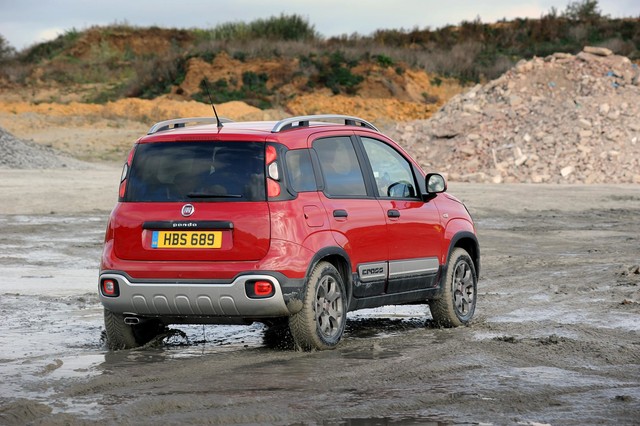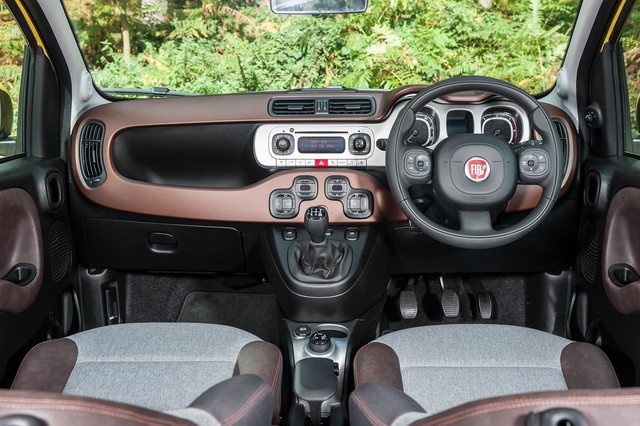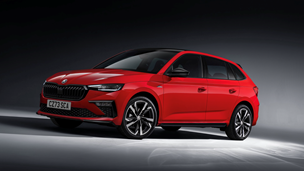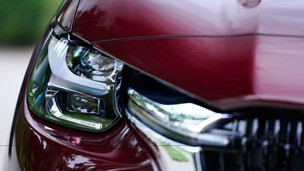Every time I looked at the Fiat Panda Cross from the side it occurred to me that I must look very odd driving it, but when I was actually doing so I didn't care. Peculiar device though it may be, and with some obvious flaws, it's nevertheless quite charming and I like it a lot.
Charm isn't really what Fiat was aiming for when it created the Cross. This is the most butch Panda of the current generation, with even more off-road ability than the already adventuresome Panda 4x4.
The unmissable body protection suggests that the Cross is prepared to tackle intimidating terrain. Its three-mode Terrain Control system, substantial ground clearance and Mud & Snow tyres give you the chance to do so with some confidence.
The Cross is available with a 79bhp 1.3-litre MultiJet diesel engine, and in that form it costs £17,225. For £1,000 less you can have the 89bhp 0.9-litre two-cylinder TwinAir turbo petrol unit, the only engine in the world I would like to keep as a pet. It make the Cross sound simply delightful, like a race-tuned Citroen 2CV, though I was rather alarmed by the interior noise levels the first time I switched it on and still rather concerned about them the day the car left me.
Official combined fuel economy is 57.6mpg, but TwinAir engines are notorious for not being able to match their EU test results in real-world driving. A possible explanation is that people rev them too hard.

A two-cylinder engine sounds like it is revving only half as high as a four, so there's a temptation to use lower gears than necessary even because the TwinAir sounds as if it's labouring even when it isn't. It's quite common to believe that the engine is rattling itself to a standstill while the gearshift indicator is telling you to change up.
But there must be more to it than this. I tried to keep the revs down whenever possible (though the moderate power output means you simply have to gun the engine on steep hills if you don't want to slide back down them) and hoped this would help save fuel.
It didn't really. After 960 miles, predominantly on motorways, the trip computer told me I'd averaged 41.5mpg, but I've found in the past that Fiats tend to tell you what you want to hear rather than what you need to know. The Cross played the same trick: my own measurements suggested that I'd done no better than 38mpg.
On tarmac roads, the Cross handles fairly well, and the pitching motion which can't be entirely eliminated from a car that is so tall for its length is mildly uncomfortable rather than alarming. Very large bumps are absorbed beautifully, to the point where you hardly need to slow down for the ones put on urbans roads by councils specifically to make you do so.

The interior is pretty and not short of those "squircles" which are more aesthetically pleasing than their name is.
Less happily, the steering wheel isn't adjustable for reach, which is ridiculous, and the footrest is difficult to use because the clutch pedal is in the way. Also, the cupholder nearest the driver is so close to a prominent part of the centre console that the cup in question can't be stood up straight in it. Instead, it leans back at an angle of maybe ten degrees, so it would be advisable to consume at least a third of the beverage before putting it in storage. The interior could become very messy if you don't.
There isn't much room in the rear, and with all the seats in the place there's only 225 litres of luggage space. That makes the Cross (and indeed Pandas in general) less practical than most current superminis.
As you can see, there are many reasons to dislike the Cross, but in spite of everything I admired its character right from the start and quickly became very fond of it.
If you don't need to venture off-road there's no reason, other than perhaps a fondness for its styling, to choose it over a regular front-wheel drive Panda. If, on the other hand, you do, it's a very effective dual-purpose vehicle, more or less equally at home in civilisation and the wilderness.



